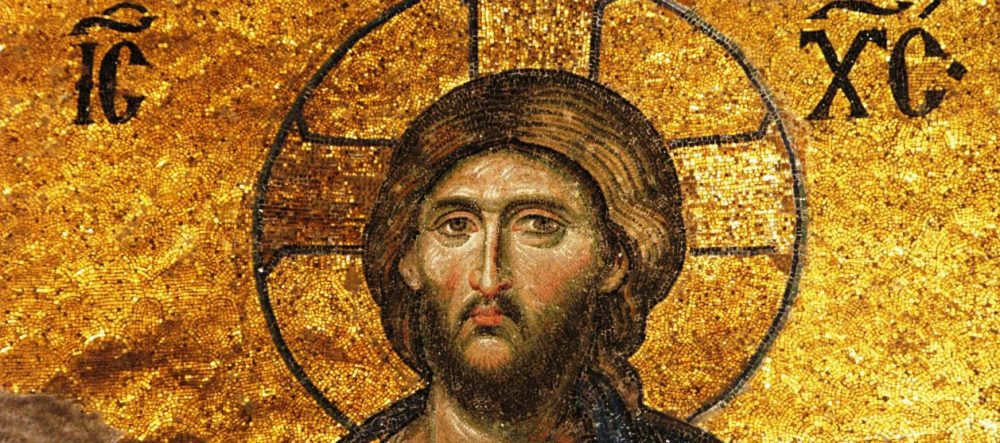Of course, the Head of the Church is Jesus Christ. The Church is His Body.
Under Him we have a hierarchical leadership.
Our parish is a part of The Orthodox Church in America (OCA).
The Primate of the OCA, Metropolitan Tikhon, is the leader of the Holy Synod of Bishops who govern and oversee the entire OCA.

The Most Blessed Tikhon (Mollard) – Archbishop of Washington, Metropolitan of All America and Canada
Our local diocese, The Diocese of The South, is headed by Archbishop Alexander.

The Most Reverend Alexander (Golitzin) – Archbishop of Dallas, the South and the Bulgarian Diocese
Archbishop Alexander is assisted by Bishop Gerasim.

The Right Reverend Gerasim (Eliel) – Bishop of Fort Worth. Auxiliary to the Diocese of the South
Our holy parish is headed by Father Stephen.

Father Stephen (Lourie)
Father Stephen (Lourie) was a New England protestant in his formative years and wandered away from Christianity in his high school years.
After committing his life to Christ in 1976, and after college and seminary he began a journey that culminated in bringing his family into the Orthodox Church in 1991 at Eagle River, Alaska.
In 1994 after completing further studies at The Antiochian House of Studies, he was ordained deacon by Bishop Basil of Wichita at St. John The Evangelist Orthodox Cathedral in Eagle River, Alaska.
In 1996 he was ordained to the Holy Priesthood by Metropolitan Joseph of The Antiochian Archdiocese of North America. He served there as an assistant priest until 2004 when he was transferred to St. George Orthodox Church in Altoona, Pennsylvania.
In 2013 he became the pastor of Holy Spirit Orthodox Church in Venice, Florida
Father Stephen and his wife, Matushka Nancy, have been married for 41 years. They have four children and seven grandchildren.

Matushka Nancy and Father Stephen
Also helping is retired priest, Father Brendan (Doughterty), and his wife Matushka Mary.
Another tremendous help to Father Stephen is Deacon Jim.

Deacon Jim (Atty)
Deacon Jim (Atty) has been part of the parish of Holy Spirit Orthodox Church since 2017. He completed the three-year St. Stephen’s course at the Antiochian Village from 2012-2014. He was ordained in September 2016 by His Grace Bishop Anthony, also Fathers Fred Shaheen, Elias Koury, Germogen Tucker, and Deacon Edmund Abodeely.
Deacon Jim enjoys serving the church and reading the history of our Orthodox faith and the lives of the Saints. He loves to visit with parishioners and to help our youth move forward in their spiritual life.
Deacon Jim’s favorite passage from the Bible is when Jesus is on the cross, and the thief asks for forgiveness. Jesus tells the thief, “Today you will be with me in my kingdom.” Deacon Jim hopes everyone will remember that no matter when, Jesus is always waiting for you.
Deacon Jim and his beloved wife Gwen live in Venice for 6 months of the year. When he is not serving the parish, he enjoys playing golf, exercising, collecting coins, and spending time with his two children and four granddaughters.
The Parish Council assists Father Stephen and the other clergy. The 2022 Parish Council members are: Reader Kyriakos (Trevor) Greer, and Bob Telep, Stephanie Waghorn, Alice Hawrilenko, Reader George Jacobs, and Robert Robinson.
 His death Christ tells His disciples that one of them will betray Him. He also predicts that they will desert Him, and that Peter will deny Him three times. On Wednesday the Gospel describes how Judas betrayed the Savior with a kiss. Thursday’s Gospel tells how Jesus was questioned by Pilate. On Friday we read the narrative of Christ’s crucifixion and death.
His death Christ tells His disciples that one of them will betray Him. He also predicts that they will desert Him, and that Peter will deny Him three times. On Wednesday the Gospel describes how Judas betrayed the Savior with a kiss. Thursday’s Gospel tells how Jesus was questioned by Pilate. On Friday we read the narrative of Christ’s crucifixion and death.









